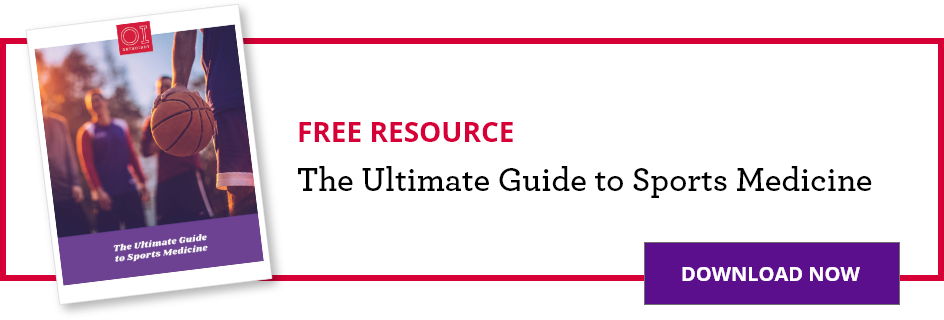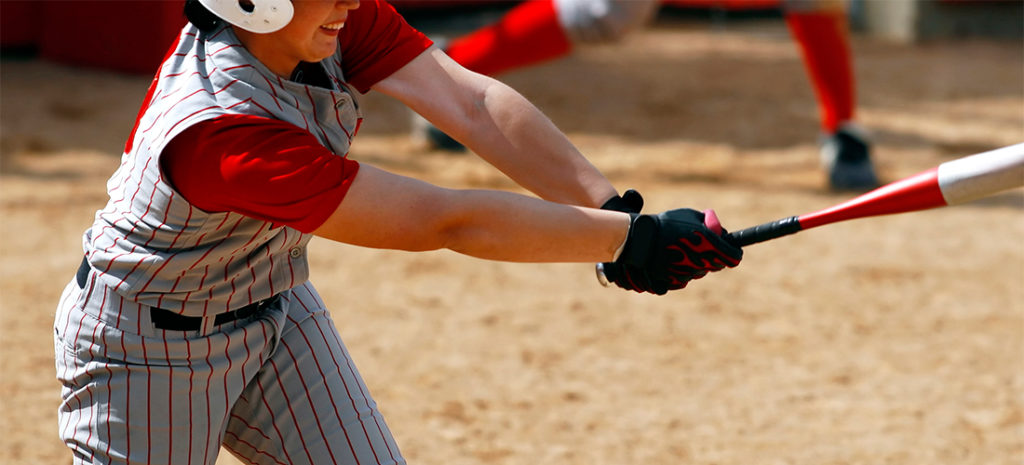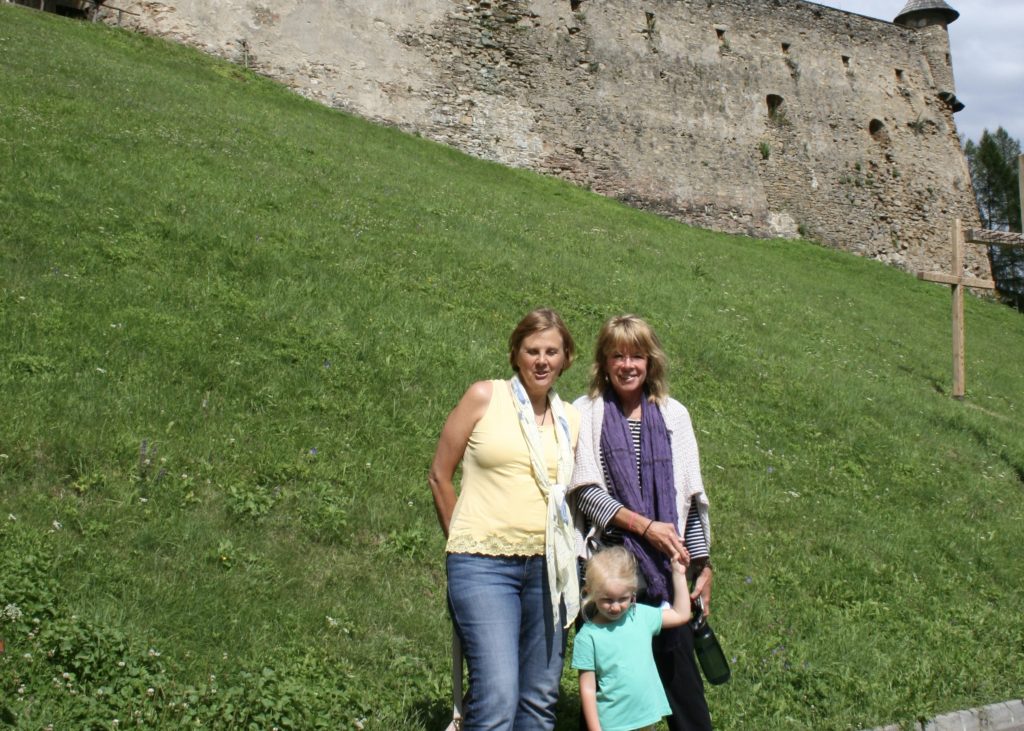THIS ARTICLE IS PART OF THE ULTIMATE GUIDE TO SPORTS MEDICINE
Marni Hendricks-Rockey is willing to try a new exercise or activity at least once. In the past few years, she has enjoyed yoga, running, walking and riding her bike to stay active. However, last year she wanted to complete a 5k so she changed her routine to focus less on yoga and more on running.
Shortly after starting her 5k training, Marni started to experience hip pain. At first, the pain was mild, and she thought she needed to just stretch it out. Over time, the pain worsened, and it became difficult to even walk.
Since it was summertime, Marni felt particularly frustrated that she couldn’t get outside and be active. It got to the point where it was painful for Marni to sit for long periods of time. All she could do for relief was lay down and ice her hip whenever she had a chance.
“I was very frustrated and felt defeated. I had always wanted to run in a race and was working on conquering that goal, which I had to accept was not going to happen,” said Marni.

A solution to hip pain
After a recommendation from her primary care physician about consulting a specialist from OrthoIndy, Marni did some research. “After researching the best hip surgeons in Indianapolis, I found Dr. Roberson,” said Marni.
She quickly made an appointment with Dr. Troy Roberson, an OrthoIndy orthopedic surgeon who treats a variety of conditions including hip pain.
“Upon meeting Dr. Roberson, I immediately liked him. He was so empathetic and very easy to talk to. He cared about the obstacles I had and worked with me on those. I never felt rushed in an appointment with him and always felt like he truly cared,” said Marni.
Dr. Roberson informed Marni that she had a labrum tear in her right hip, which was the cause of her pain. The labrum is the cartilage that lines the outside rim of the socket of a joint. The labrum acts as a cushion to the joint and helps stabilize the hip. The tear happens when the labrum is separated from the socket. Most commonly, it’s the result of repetitive action that strains the hip joint.
In addition to repetitive motion from running, the reason Marni had torn her labrum was also due to the unusual shape of her joints.
“In most cases, there is an underlying mechanical issue that eventually leads to a labrum tear in the hip. Marni has an overly deep hip socket, which over time can lead to rubbing on the edge of the socket where the labrum lives causing a tear,” said Dr. Roberson.
“In some cases, we can work with physical therapy and try other conservative treatments to try to alleviate the pain, but unfortunately in other cases this is not enough, and we have to surgically address the bony underlying cause and the torn labrum.”
In August 2018, Marni had a hip arthroscopy. A hip arthroscopy, sometimes called a “hip scope,” is a minimally invasive hip surgery in which an orthopedic surgeon uses an arthroscope to examine and treat the inside of the hip joint. After a hip arthroscopy, you will be on crutches for two to four weeks.
“Dr. Roberson explained things very well, gave me options and tried everything prior to having to do surgery, which I appreciated,” said Marni. “It’s hard to find a great surgeon that has a good bedside manner as well; Dr. Roberson has both!”
Another setback – shoulder pain
After hip surgery, Marni focused on her recovery goals. However, she had always had shoulder pain and it started to flare up more intensely with the use of crutches. In fact, simple chores such as laundry or lifting even light object would cause Marni a lot of pain.
Since Marni knew she had deep joints that had caused the labrum tear in her hip, she wondered if her shoulder had the same issue and she went back to Dr. Roberson for advice.
“Interestingly, the issue in her shoulder was quite different where in fact the shoulder was too loose, rather than too deep like her hip socket, and over time she had secondarily developed a tear in the shoulder labrum,” said Dr. Roberson.
“The hip and the shoulder are drastically different joints with different mechanical properties and as such the labrum plays a different role in each. Much like the hip though, in many cases, we can try to manage with therapy and other means, but Marni was not able to achieve a satisfactory status with these treatments and had been dealing with this for quite some time.”
In December 2018, Marni had a shoulder arthroscopy and was once again trying to manage her recovery process. Typically, it takes four to six months for the shoulder to heal completely.
A sling is used to rehab the shoulder for three to six weeks after surgery. Physical therapy will focus on shoulder exercises, which are used for range of motion and flexibility after the sling is taken off.
Life after hip and shoulder surgery
“Finding out about the shoulder tear was another big challenge and I wasn’t sure how we would manage. My husband and I have 7 children and I was going to be out of commission for a few months,” said Marni.
Fortunately, Marni was able to count on her family members and close friends for support.
“The physical pain on top of trying to manage everything was difficult. Luckily, I have a wonderful husband, very helpful children, many phenomenal neighbors, friends and family that helped with meals, driving my kids, taking me to physical therapy and coming to visit!”
Although Marni can no longer run due to the shape of her joints and the risk it could cause another hip tear, she is able to get back on her bike and return to yoga classes. Marni plans to keep improving and advancing her yoga skills in the future and also travel with her husband pain free.
To make an appointment with Dr. Roberson, call 317.802.2477 or visit his website.
DOWNLOAD THE ULTIMATE GUIDE TO SPORTS MEDICINE
Schedule an appointment
Your well-being is important to us. Click the button below or call us to schedule an appointment with one of our orthopedic specialists. If your injury or condition is recent, you can walk right into one of our OrthoIndy Urgent Care locations for immediate care. For rehabilitation and physical therapy, no referral is needed to see one of our physical therapists.





